Last updated on Oct 14, 2025
What is Chekhov’s Gun? Definitions, Tips and Examples
Martin Cavannagh
Head of Content at Reedsy, Martin has spent over eight years helping writers turn their ambitions into reality. As a voice in the indie publishing space, he has written for a number of outlets and spoken at conferences, including the 2024 Writers Summit at the London Book Fair.
View profile →Chekhov's gun is a fundamental dramatic principle that emphasizes the role of carefully selected narrative details. By adhering to it, authors will be able to integrate elements within a story or play that contribute meaningfully to the overall story arc.
The phrase 'Chekhov's Gun' originates from advice that the writer would commonly give to young playwrights: “If in Act One you have a pistol hanging on the wall, then it must fire in the last act.”
Today, the dramatic principle of Chekhov's Gun — that every element introduced in a story should have a function in the overall narrative— is a seemingly unbreakable rule of storytelling. When implemented correctly, it also guides writers towards better plot development, deeper character growth, and overall more effective writing.
Chekhov’s Gun vs. foreshadowing
Many writers often confuse Chekhov's Gun with foreshadowing, so let’s quickly clear up how they differ:
- Chekhov’s Gun refers to the unspoken agreement that a writer won’t make “false promises” to a reader by introducing elements that are unexplained. In other words, if you draw attention to something, you will eventually reveal why it's worth noticing.
- Foreshadowing takes place when a writer drops hints that the reader will probably overlook until the moment that all of the details come together. To learn more about foreshadowing, go here for our in-depth take on the tactic.
Here’s an example:
If you mention that a character can read minds in Chapter 1, you'd be following the mandate of Chekhov's Gun if, eventually, this character's telepathic abilities were to become a significant plot point.
However, if you want the mind-reading to be a surprise to the reader, you need to foreshadow this reveal. You don’t need to specifically state that the character is telepathic in the opening scenes. However, you should drop clues so that if the reader looks back, they can see the story was building up to the reveal the whole time.
Most modern readers are acutely aware of foreshadowing — and will expect an explanation down the line: a perfect example of Chekhov's Gun in action.
Chekhov's example: In Act One of his play, “The Seagull,” Konstantin Treplyev uses a rifle to kill a seagull and then brings the rifle with him onstage. At the end of the play, Konstantin uses this same rifle to commit suicide offstage.
4 ways to use Chekhov’s Gun
As with any literary “rule,” you should take Chekhov’s Gun with a grain of salt and be mindful of where and how you apply it. If you are looking to put the pistol proposition to work in your writing, here are a few ways to do it, and a few reminders to keep handy as you go.
If you'd like to learn more about other literary devices, you can check out our comprehensive guide to irony here, or learn about metpahors here, as well as checking out this comprehensive list of this comprehensive list of 35+ literary devices to use in your writing. Or you can directly download the free checklist below!
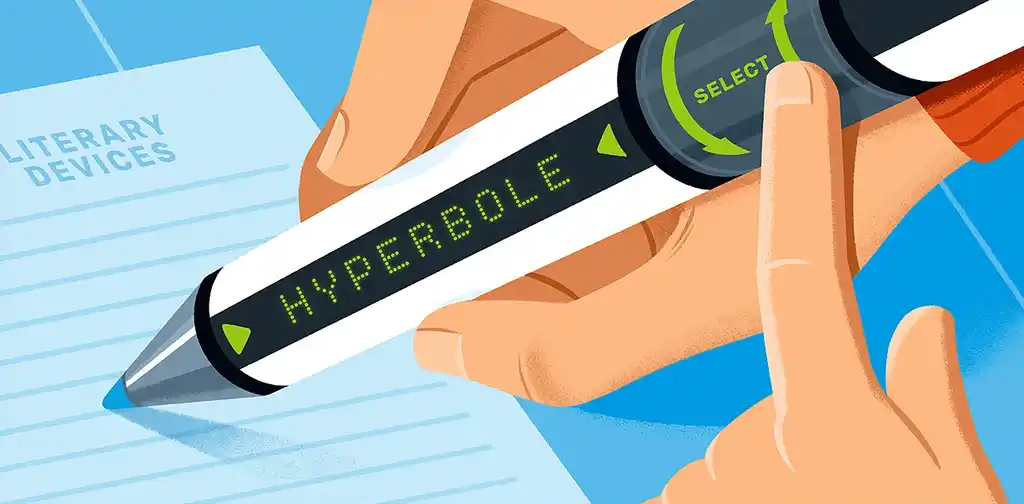
FREE RESOURCE
Literary Devices Cheatsheet
Master these 40+ devices to level up your writing skills.
1. Spotlight an item
Authors can use their prose to bring a scene or setting to life. You might describe the way spring air smells sweet or how a fresh layer of morning snow makes a character feel nostalgic. Sensory details are a great way to employ the “golden rule of "show, don't tell" and help bring a story to life.

FREE COURSE
Show, Don't Tell
Master the golden rule of writing in 10 five-minute lessons.
These kinds of details are important as they make for rich writing — but just because you’re focusing on them doesn’t mean that every single one should represent a moment of major significance. If a character sits down on a chair in the first chapter, it doesn't mean that the chair has to come to life during the denouement (no doubt, to impart some wisdom). That chair can simply be sat in and forgotten.
However, if you write that your character sat in a chair that released puffs of dust into the air as it sagged and made the character wonder how they’d manage to get up later — you have now given the chair significance, and this significance should play a role at some point in the story. Perhaps moments later, the character needs to escape and is foiled by the saggy chair. Or maybe it’s important to know that the chair is saggy because it adds to the setting of an old, forgotten house — and this setting is an important element of the scene. Whatever the case, circle back on why the chair is worth emphasizing. Otherwise, it’s an extraneous detail and, according to the rule, should be removed.
Example: Ready Player One by Ernest Cline
The “Gun” — the coin
In Chapter 22, protagonist Wade Watts aka Parzival plays a perfect game of Pac-Man after which he is able to collect a quarter that was stuck to the machine. He picks it up, pockets it, and doesn’t think much about it until…
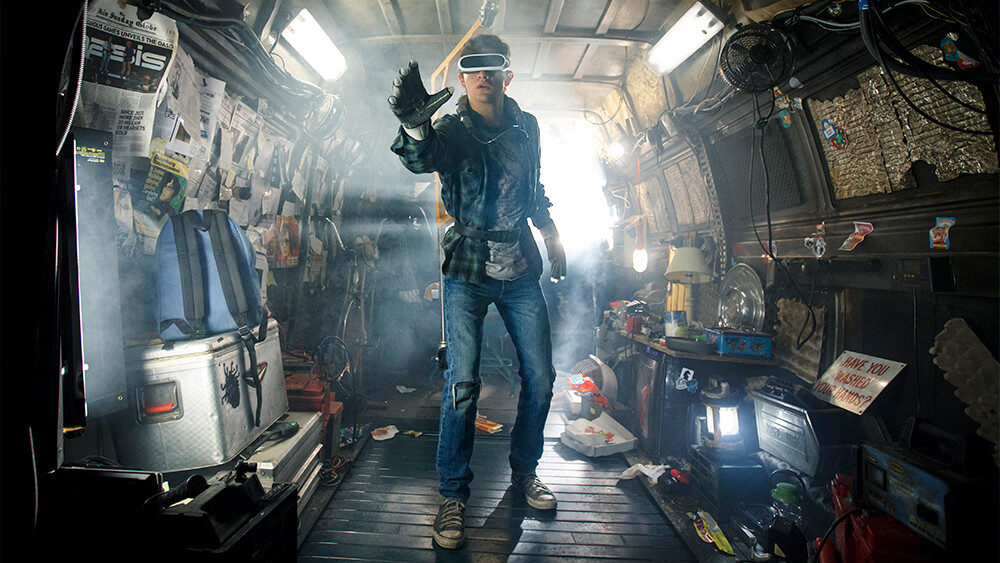
Chapter 36. In the book’s climax, Parzival makes it into a castle in the midst of a massive fight: “As the three of us stepped forward, preparing to enter the gate, I heard an earsplitting boom. It sounded like the entire universe was cracking in half. And then we all died.”
However, as luck would have it, that innocuous little coin Parzival picked up earlier in the story is actually an “extra life” and he survives.
Why it works: It’s not unusual to win a coin or prize when playing an arcade game. But Cline places significance on this item by writing that it’s stuck to the machine until a perfect game is played. It would make for a random plot point if the coin wasn’t revisited later and the reason only specific people can pick up the coin wasn’t revealed.
2. Spotlight a character trait
You should also keep Chekhov’s Gun in mind when how you introduce your characters. Perhaps towards the beginning of the novel, you reveal that since childhood, a character has an uncanny knack for sensing how other people are feeling. This attribute now needs to come into play somehow — whether it’s something that shapes their interactions with other characters throughout the story or it plays a crucial role in a climactic scene just at the very end. Otherwise, it’s an irrelevant detail that doesn’t add to our understanding of the story or character.
Example: The Hunger Games by Suzanne Collins
The “Gun” — Katniss’ knowledge of poisonous plants
In Chapter 4, we learn about Katniss’ skill to forage for plants and her knowledge of poisonous vegetation: “Many are edible, but one false mouthful and you’re dead. I checked and double-checked the plants I harvested with my father’s pictures. I kept us alive.” It’s a skill of Katniss’ that is emphasized.
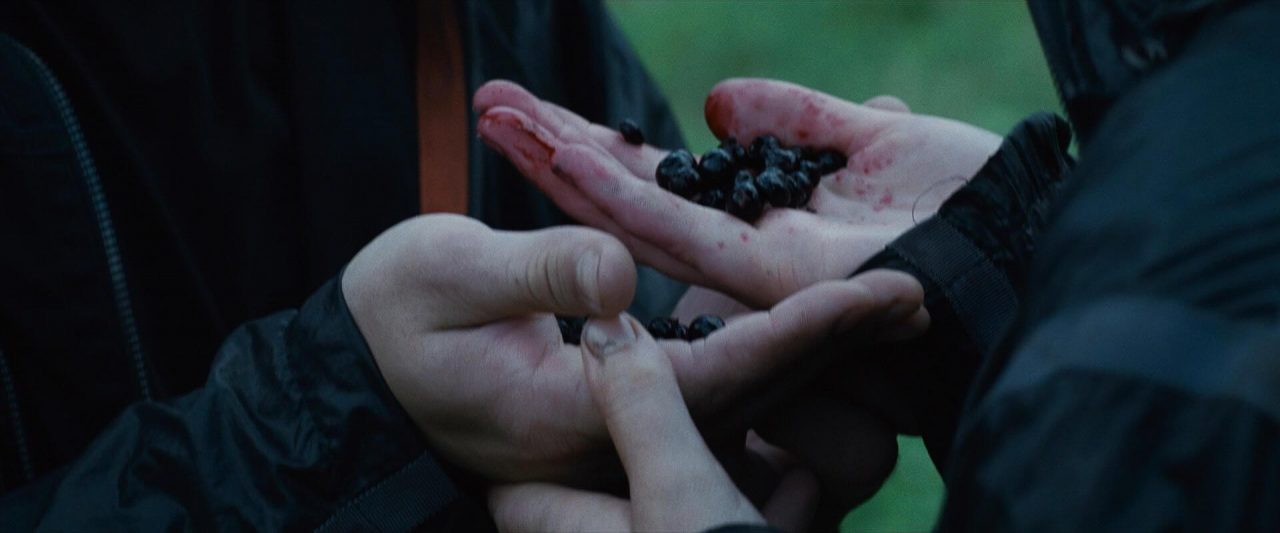
Later, Katniss demonstrates this knowledge when she chastises Peeta for collecting poisonous berries and almost eating them.
And, of course, the novel's climax occurs when Katniss uses those very berries to trick the Capitol into letting her and Peeta survive the Hunger Games.
Why it works: This is an example of a “Gun” that is gradually built upon throughout the story's progression. It symbolically hung on the wall at the start, when Katniss’ skill is revealed. The importance of this knowledge is demonstrated when Peeta almost poisons himself — those very berries almost becoming their own “Gun.” And then the pistol is “shot” at the novel’s climax.
3. Do something unexpected
Imagine this: you’re reading a novel and halfway through, the two main characters are having a heated debate at a coffee shop when a man with a cane, pink pinstripe suit, bowler hat, and jaunty walk strolls by, bringing the argument to a halt as the two characters stare at his unusual attire.
At this point, the man in the hat has served a plot-related purpose: ending the argument. However, his role in the story can’t end there. If you’re going to suddenly introduce an out-of-the-ordinary element, you need to follow through with an explanation for your readers. Why is the man dressed this way? Why is he at the coffee shop? Why was it necessary for this man specifically to end the other characters’ argument? Introducing elements in an unusual context is a great way to place significance on something — but if you don’t have a purposeful reason for doing so, you’re a rule-breaker in Chekhov’s books.
What is a Red Herring?
A red herring is a literary device used to throw readers “off the scent.” They’re most often used in crime and thriller novels, but can be found in many other genres, too. When an author uses a red herring, they introduce items in a way that makes the reader think they are important to the story — when in fact they are there to distract the reader from what’s really going on.
Want to see examples of Chekhov's Gun in some of the best mystery and thriller novels out there? We've got you covered. Check out the nine best cozy mysteries here, or the 22 best psychological thrillers in this post.
But just because they are there to distract the reader doesn’t mean that Chekhov’s Gun rule doesn’t apply to red herrings — you still don’t want to introduce totally random elements that never go anywhere. Even if it’s a minor one or only related to a subplot, a red herring should still have some relationship to the story.
Can Chekhov's Gun be used as a rhetorical device? Find out here.
Example: Great Expectations by Charles Dickens
The “Gun” — the character Magwitch
In chapter 1, Pip is sitting in a graveyard by his parents’ tombstones when suddenly a gruff man dressed in rags and leg-chains appears and grabs Pip. We learn the man (Magwitch) is an escaped convict and he demands Pip bring him food and a file so that he can get rid of his leg irons. Pip returns the next day with the requested items, but, strangely, ends up accidentally trying to give them to a different escaped convict who bears a resemblance to Magwitch. The mistake is cleared up and Pip eventually delivers the food and iron to Magwitch, who becomes irate and aggressive when Pip describes his encounter with the other convict.
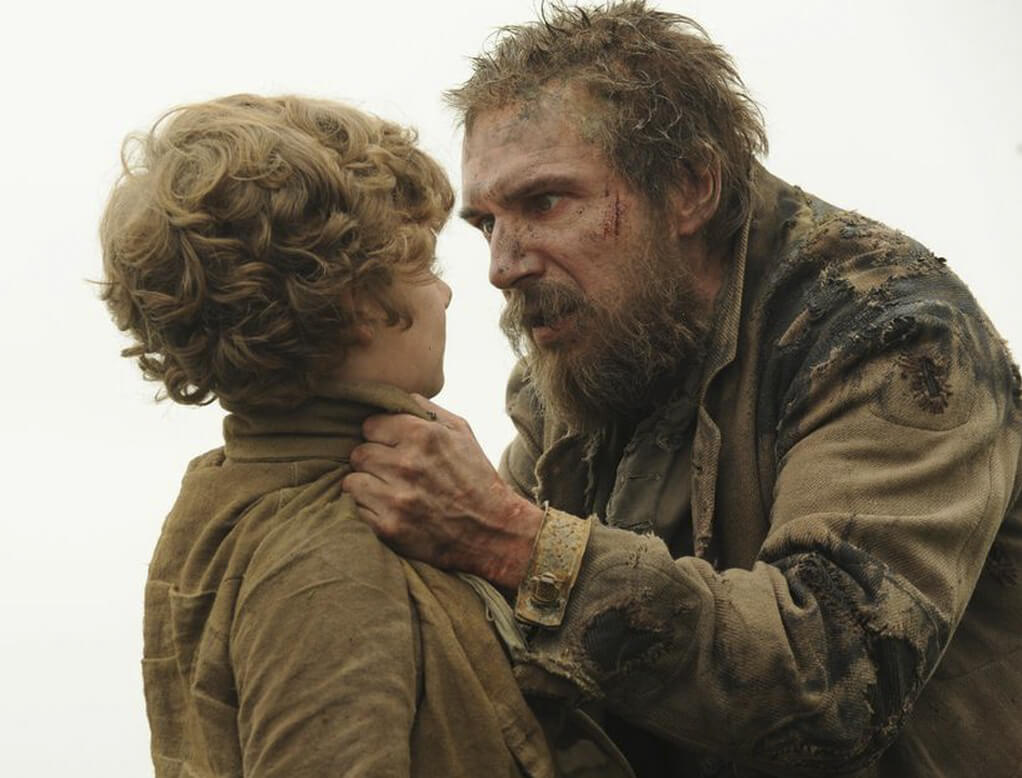
The significance of Magwitch is merely brushed upon in these opening scenes, but readers are not immediately given the sense that he will play a crucial role in Pip’s life. Which, of course, turns out to be very untrue as it is later revealed that Magwitch is Pip’s secret benefactor — a major, albeit behind-the-scenes, influencer of Pip’s life and his “great expectations.”
Why it works: The role of Magwitch is an effective use of Chekhov’s Gun because he is introduced to us an in an unusual and questionable way, which places significance on him. The mystery surrounding the circumstances of his conviction and his relationship to the second convict Pip encounters provokes us just enough to wonder what role this man might play in the story — and yet doesn’t place too much emphasis on him so that we’re expecting the grand reveal when it happens.
4. Focus on an element that carries strong implications
There’s a reason why Chekhov pointed to a pistol. A pistol is an object that carries symbolic weight and can imply a number of things — such as violence. So if you’re going to introduce an item that people generally have strong feelings towards, you should be careful to give that item a purpose to carry out.
And remember: the pistol can be fired, but it can also be used in other ways to fulfill Chekhov’s Gun rule. It could be hung on the wall of a man who recently used the pistol to win a duel. It could be a mock pistol hung on the wall of an eccentric artist with a taste for weaponry as decor. Again, if you focus on an item, you need to give it some significance within the plot. It might not necessarily be “used” with action — it might just serve a scene’s imagery. Simply ensure it has a clear purpose that integrates it into the story.
Example: Breaking Bad
The “Gun” — the box cutter
Breaking Bad is a treasure mine of brilliant examples of Chekhov's Gun. However, one of the most memorable instances must be the first episode in the fourth season, where we see an box cutter lying on the ground in the opening act.
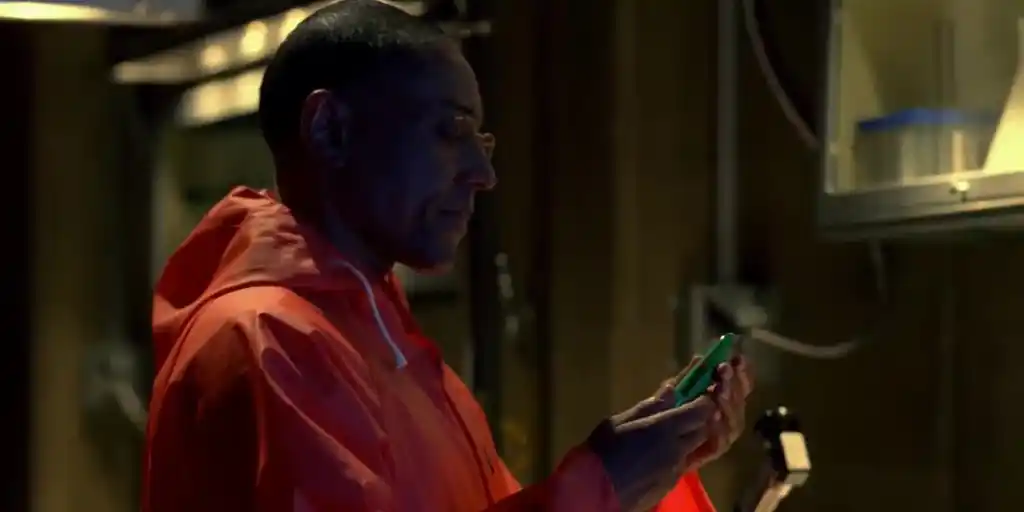
What happens in the final act of the episode, you might ask? Lo and behold: that box cutter is exactly what Gus uses to slice open Victor's throat.
Why it works: A box cutter is, in this case, the perfect setup of Chekhov's Gun. By showing viewers a seemingly ordinary, innocent tool in the beginning of the episode and then flipping everything onto its head and turning it into a killing weapon by the episode's end, the writers of Breaking Bad made Victor's brutal murder all that more memorable and astonishing.
And it worked: on the day that it aired, the episode broke viewing records. Fun fact, the episode itself is titled "Box Cutter."
Fun fact: a plot device that can be seen as the opposite of Chekhov’s Gun is the “MacGuffin.” Popularized by Alfred Hitchcock, the MacGuffin typically takes the form of a goal or object of desire for the protagonist that is simply used in order to take the character on a journey — while the actual goal/object carries no narrative significance itself. An example of this can be seen in Pulp Fiction: the briefcase is vehemently and violently pursued and protected by characters throughout the movie, and yet its contents and the suitcase’s significance to the characters are never revealed.
Of course, you don’t need to follow Chekhov’s Gun rule to a tee, circling back to every single detail in a story. This will surely exhaust your readers. Instead, think of Chekhov’s Gun as a reminder that you shouldn’t leave extraneous details scattered throughout your story — make your words count, and place significance on the details that matter to the story.










5 responses
Marnie Somers says:
05/06/2018 – 19:31
I edited a book for an author in which the protagonist has a diamond pin, which gets stolen by another character, who then tries to ransome it back to her, but she refuses, and he keeps the pin. Then nothing more happened relative to the pin in the book. So, near the end of the story, I suggested adding it back in again, where the protagonist makes accusations against the thief, and tells the authorities that if they need proof, to just search his belongings and they will find her pin. Tied up the relevance of the pin nicely.
p38l5 says:
07/06/2018 – 07:12
"Show don't Tell" is an expression that unfortunately came over from Film-making and is misused. We are Story Tellers and sometimes must "Tell" or explain items in a novel. Yes, you can over do it. But this idea that everything is basically predicated on Visual Action as in today's Films is degrading the more introspective/intellectual parts of Story Telling to be replaced with Super Hero Movie Action. Yes, I have written scripts. I wonder if the idea of the flaneur concept in writing will ever be used again. ADD is killing introspective writing.
↪️ Ahmed Draz replied:
17/12/2019 – 14:20
I totally agree.
Billy_Ruffian says:
10/12/2018 – 17:16
"Chekov's Gun" is in no way a plot device. Rather, Chekov was commenting on narrative detail and what detail are necessary and what details are not. He was stating that a writer should not describe details not relevant to the plot, character development or theme. In other words, don't describe a gun hanging on a wall if that gun has not, or will not, played a role in the story.
↪️ Leica Apostate replied:
25/02/2019 – 06:46
Yes, it is a literary equivalent to "Occam's Razor": do not indulge in superfluity. Also, originally, it was about how to construct plays, perhaps to edit plays down, and I think it makes the most sense in terms of set design and props. Chekhov himself indulged in some superfluity and false promises in his short stories, for instance. It is hard not to have some unshot Guns in novels, and I find some YA novels' Checkhovian tightness a bit too much at times; some superfluity is needed to render the world more rich and realistic. Douglas Adams, by contrast, littered his worlds with random Guns, only to later coerce them into use, often to a delightful, if contrived, effect. I suppose it is all in balance and moderation. So, do not overindulge in superfluity.